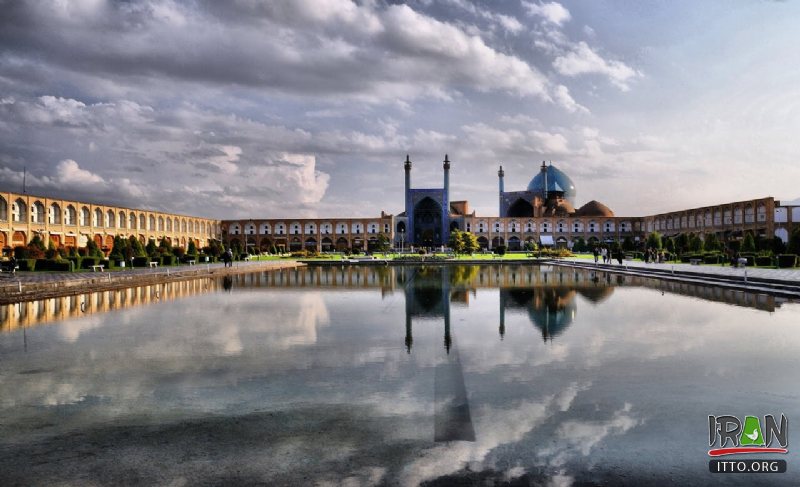Iranian Architecture history dates back to at least 5,000 BC with characteristic examples distributed over a vast area from Turkey and Iraq to Uzbekistan and Tajikistan, and from the Caucasus to Zanzibar. Persian buildings vary from peasant huts to tea houses and garden, pavilions to "some of the most majestic structures the world has ever seen".
In addition to historic gates, palaces, and mosques, the rapid growth of cities such as the capital, Tehran (Architecture of Tehran) has brought about a wave of demolition and new construction.
Iranian architecture displays great variety, both structural and aesthetic, from a variety of traditions and experience. Without sudden innovations, and despite the repeated trauma of invasions and cultural shocks, it has achieved "an individuality distinct from that of other Muslim countries".
Traditionally, the guiding formative motif of Iranian architecture has been its cosmic symbolism "by which man is brought into communication and participation with the powers of heaven". This theme has not only given unity and continuity to the architecture of Persia, but has been a primary source of its emotional character as well.
According to Persian historian and archaeologist Arthur Pope, the supreme Iranian art, in the proper meaning of the word, has always been its architecture. The supremacy of architecture applies to both pre- and post-Islamic periods.
Pre-Islamic architecture of Persia:
The pre-Islamic styles draw on 3000 to 4000 years of architectural development from various civilizations of the Iranian plateau. The post-Islamic architecture of Iran in turn, draws ideas from its pre-Islamic predecessor, and has geometrical and repetitive forms, as well as surfaces that are richly decorated with glazed tiles, carved stucco, patterned brickwork, floral motifs, and calligraphy. Iran is recognized by UNESCO as being one of the cradles of civilization.
Islamic architecture of Persia:
The fall of the Sassanian dynasty to the invading Muslim Arabs led to the adaptation of Persian architectural forms for Islamic religious buildings in Iran. Arts such as calligraphy, stucco work, mirror work and mosaics became closely tied with the architecture of mosques in Persia (Iran). An example is the round-domed rooftops which originate in the Parthian (Ashkanid) dynasty of Iran.
Archaeological excavations have provided extensive evidence supporting the impact of Sassanid architecture on the architecture of the Islamic world at large.
Many experts believe the period of Persian architecture from the 15th through 17th centuries CE to be the pinnacle of the post-Islamic era. Various structures such as mosques, mausoleums, bazaars, bridges and palaces have survived from this period.
Safavid Isfahan tried to achieve grandeur in scale (Isfahan's Naghsh-i Jahan Square is the sixth largest square worldwide), by constructing tall buildings with vast inner spaces. However, the quality of ornaments was less compared to those of the 14th and 15th centuries.
Another aspect of this architecture was the harmony with the people, their environment and beliefs that it represented. At the same time no strict rules were applied to govern this form of Islamic architecture.
The great mosques of Khorasan, Isfahan and Tabriz each used local geometry, local materials and local building methods to express, each in their own way, the order, harmony and unity of Islamic architecture. When the major monuments of Islamic Persian architecture are examined, they reveal complex geometrical relationships, a studied hierarchy of form and ornament and great depths of symbolic meaning.
Islamic architectural monuments of Iran are extremely versatile. Different valuable samples of such monuments are already surviving in smaller and larger towns of Iran. One of the richest artistic centers of Iran is the city of Isfahan. In some art works created in Isfahan, such doors, seven famous arts of joinery, gold beating, embossing, lattice work, inlay, raised work, and painting are used at once. Extremely fine doors are decorating various religious buildings in Iran, Najaf, Karbala, Damascus, and other sacred towns of the Islamic world. Even some of these doors are kept in major local and foreign museums because of their high artistic values and decorative arts used in them. Shrine of Imam Reza, 8th Shi'ite Imam at Mashhad, Shrine of Fatemeh the Immaculate (Hazrat-i-Ma'sumeh) at Qum, Shrine of Shah Abdul Azim at Shahr-i-Rey, and Shah-iCheraq Shrine at Shiraz, as well as numerous splendid mosques, open up new vistas of the Islamic art of Iran to the visitors.
Mirror work is another decorative element of Iranian structures during Islamic period. The finest examples of skillfully fulfilled mirror work can be seen in the religious buildings of Mashhad, Shiraz, Qum, and Rey. The technique has been used in palaces and magnificent traditional houses as well, and follows architectural elements such as domes, minarets, and towers in terms of significance.


